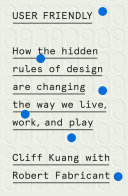

User experience (UX) is the cornerstone of product design and development. The book emphasizes that creating a product that is user-friendly is not just about aesthetics or functionality; it’s about understanding the user's needs, behaviors, and emotions. A product that prioritizes UX can lead to increased customer satisfaction, loyalty, and ultimately, profitability. The author explores various methods for gathering user feedback, such as usability testing, surveys, and interviews, highlighting the importance of iterative design processes that incorporate user insights at every stage of development. By placing the user at the center of the design process, companies can create products that are not only functional but also enjoyable to use. This idea underscores the shift in focus from a purely technical approach to a more holistic view that considers the user's journey and experience with the product.
Continue readingDesign thinking is presented as a powerful framework for problem-solving and innovation. The book outlines the five stages of design thinking: empathize, define, ideate, prototype, and test. This iterative process encourages teams to empathize with users, define problems accurately, brainstorm creative solutions, prototype their ideas, and test them with real users. The author provides case studies that illustrate how design thinking has been successfully implemented in various industries, leading to breakthrough innovations. By adopting a design thinking mindset, organizations can foster a culture of creativity and collaboration, enabling them to tackle complex challenges and deliver user-centered products.
Continue readingAccessibility is a crucial aspect of user-friendly design that is often overlooked. The book discusses how designing products that are accessible to people with disabilities not only fulfills ethical and legal obligations but also expands the potential user base. The author provides practical guidelines for creating accessible designs, such as using clear language, ensuring compatibility with assistive technologies, and considering diverse user needs. By prioritizing accessibility, companies can create inclusive products that cater to a wider audience, enhancing overall user experience and fostering brand loyalty. This idea emphasizes that user-friendly design should consider all users, regardless of their abilities.
Continue readingThe book delves into how technology influences user behavior and expectations. With the rapid advancement of technology, users have become accustomed to seamless and intuitive experiences. The author explores the implications of emerging technologies, such as artificial intelligence, machine learning, and augmented reality, on user interactions. By understanding these trends, designers can create products that not only meet current user expectations but also anticipate future needs. This idea highlights the importance of staying informed about technological advancements and adapting design strategies accordingly to remain competitive in the market.
Continue readingUser-centric design is not just a buzzword; it has tangible business benefits. The book presents data and case studies that demonstrate how investing in user experience can lead to increased sales, reduced support costs, and enhanced customer loyalty. The author argues that companies that prioritize UX are better positioned to differentiate themselves in crowded markets. By aligning business goals with user needs, organizations can create products that resonate with their target audience, leading to sustainable growth. This idea reinforces the notion that user-friendly design is an investment rather than an expense.
Continue readingThe book emphasizes the importance of collaboration among different disciplines in creating user-friendly products. Successful design requires input from various stakeholders, including designers, developers, marketers, and users. The author advocates for cross-functional teams that work together throughout the design process, fostering a shared understanding of user needs and business objectives. By breaking down silos and encouraging open communication, organizations can create more cohesive and effective products. This idea highlights that user-centered design is a collective effort that benefits from diverse perspectives and expertise.
Continue readingUser-friendly design is not a one-time effort; it requires continuous improvement and adaptation. The book discusses the importance of establishing feedback loops that allow organizations to gather user insights after product launch. By monitoring user behavior, collecting feedback, and analyzing data, companies can identify areas for improvement and make necessary adjustments. This iterative approach ensures that products evolve in line with changing user needs and preferences. The author emphasizes that successful companies view user feedback as a valuable resource for ongoing development, reinforcing the idea that user experience is an evolving journey.
Continue reading